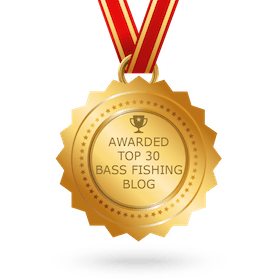By DAVID RAINER
Alabama Department of Conservation and Natural Resources
The ripples emanating from the sides of the 2-foot-long piece of pool noodle was just what Joe Dunn hoped to see.
It meant there was something attached to the line that dropped some 15 feet into the murky waters of the Alabama River near Camden.
During the dog days of summer, this fishing tactic is what Dunn prefers because the heat makes it unbearable to crappie fish in hopes of catching seven or eight keepers. The same goes for bass fishing.
So, Dunn turns to the plentiful catfish that inhabit Alabama’s many rivers, and lets the jugs, or noodles in this case, do the fishing while he enjoys a restful night of sleep. If he’s ambitious, he’ll run the 20 or so jugs during the night. If not, he’ll head out at dawn to find out what’s been biting.
Catching bait might be the only real work involved in “jug” fishing.
Catching bait might be the only real work involved in “jug” fishing.
“The predominant bait on Millers Ferry is going to be shad that you catch with your cast net,” Dunn said. “But skipjacks (members of the herring family) are another excellent bait. It’s a little harder, sometimes, to catch skipjacks. Most people use Sabiki rigs and go behind the powerhouse to catch the skipjacks. But sometimes there’s another way to catch them. If you’re on the river, sometimes you will see skipjacks chasing little river minnows or small shad. You ease over into that area, and when they come up to feed, you throw your cast net and load it up with skipjacks. We did that just the other day with the cast net.
“The key is good, fresh bait.”
Dunn said if you’re planning to do a little tightlining for catfish before you head back to camp to get out of the heat, the skipjacks will stay alive for a little while in the livewell. If you see a couple floating in the livewell, it’s best to get them all out, put them in a plastic bag and get them on ice before they degrade.
Dunn says the best way to deal with leftover skipjacks is to freeze them as soon as possible.
“Freezing skipjacks in water doesn’t work well,” he said. “When you thaw them out, they’re all mushy and just don’t work well. I found out if you put them on a cookie sheet and freeze them individually before putting them in freezer bags, they work a lot better. That’s a big plus.”

Joe Dunn shows off another nice blue catfish taken jug fishing on the Alabama River at Millers Ferry. Photo by David Rainer
When Dunn is targeting flathead catfish, he tries to catch small bream to bait the jugs. Flathead, also known as yellow cats, prefer the bait to be live and swimming.
“Most of the time, flatheads are going to hit something live, whether it’s a 3-inch bream (taken on hook and line) or a skipjack you’ve just caught in the cast net,” he said. “If you have a good live skipjack, you just hook him the middle of the back so he can swim and stay alive.
“If you’re looking for a mess of small fish for a fish fry, just use those small shad and thread them on the hook. If you’re keying on bigger fish, you’re better off with a live bait, even your bigger blue cats like live bait.”
Most people tend to shun keeping a larger blue cat because the flesh is not as suitable for consumption as any size flathead. However, Dunn said large blue cats can be delicious if they’re prepared correctly.
“The key is learning how to clean them to where they taste good,” he said. “It’s best to bleed them. I cut the tail off and throw them in the splash well. When I clean them, I get all the red meat off, and then I soak the meat in an ice-water slush. You soak it and get all the blood out, changing the water when needed to get that meat snowball white.
“Then you fry it, and it’s good. I’ve had people tell me it was the best blue cat they’ve ever eaten.”
Now Dunn is not saying he can make big blue cats taste like a flathead, which doesn’t seem to lose any appeal to the palate the larger the fish gets.
“I fried some flathead for my brother, Bubba, and he kept asking me, ‘What did you do to this fish? What did you do to this fish?’” Dunn said. “I didn’t do anything to it. It was just the fish. The flathead is just the primo catfish caught out of the river.”
Alabama’s creel limit on catfish is determined by size.
Dunn said a couple of techniques seem to work when he’s specifically targeting flatheads. He focuses on the inside bends in the river and rock walls. At the start of the bend, most will have a small sandbar. He said the flathead like to hang out at the drop-off behind the sandbar.
“They’re sitting below that bar where the current is running over the top of them, waiting on that bait to come to them,” he said. “I also like to fish where a cut is coming into the main river where the depth goes from 12 to 14 feet down to 30. They like to hang underneath that drop-off. But big blue cats like those spots too.”
Even though Millers Ferry has a reputation as a fantastic crappie fishery, Dunn thinks catfish are overlooked at times.
“This is a super good catfish fishery.”
Dunn said the hot weather pattern for catfish starts around the middle of June and usually runs through October, depending on when we get enough of a cold front to lower the water temperature.
“The key is good, fresh bait.”
“The hotter it gets, the more you stay in the main river channel,” he said. “I use the noodles because you use a lot longer lines, 15 to 20 feet, and it’s easier to wrap the lines around the noodles when I take them up.”
When he’s targeting the larger fish, Dunn uses a tarred nylon twine for the main lines with a 1½-ounce lead, swivel, monofilament leader and a 5/0 circle hook.
Dunn said the largest flathead catfish he’s hauled in at the Ferry weighed 65 pounds, and the largest blue cat he’s seen weighed 55 pounds.
For “fry ’em whole” small fish, he uses double-hook rigs with smaller hooks and smaller shad for bait.
Dunn takes a break from catfishing during the winter to head to the deer woods. The water gets high during the winter, but he’s back on the river fairly early in the new year.
“We usually start on February 17,” he said. “We’ve always started on that date because that’s my oldest son’s birthday. We would come up to the river and get our jugs ready. But that time of year, you go up in the shallow flats. The catfish will move into the shallow flats before anything else.”
In February, Dunn changes his “jugs” to 20-ounce drink bottles and 1½- to 2-foot lines with a ½-ounce to 1-ounce weight, swivel and foot of 20-pound-test monofilament leader tied to a 3/0 circle hook.
“That’s when I go in places like Gee’s Bend, Buzzard’s Roost, River Bluff, Alligator,” he said. “You just get in the backs of the creeks and throw your jugs out. You can wear them out in the springtime doing that.”
Alabama’s creel limit on catfish is determined by size. For catfish under 34 inches there is no limit. Anglers can keep one catfish 34 inches or longer in most areas of the state. Several river basins – Perdido, Conecuh, Blackwater, Yellow, Choctawhatchee, Chipola, and Chattahoochee – are exempt from the size limit. Also, it is unlawful to transport live catfish 34 inches or longer beyond the boundaries of Alabama.











